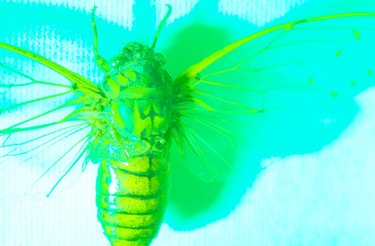
Hornets, also referred to as "yellow jackets", are one of the most aggressive varieties of wasp. Unlike bees, which produce honey and help pollinate flowers, hornets are often considered pests as they are attracted to food and can ruin many outdoor activities such as garden dinners and picnics. Hornet nests are usually initiated by a single queen. Hives remain active for a single summer, at which point the queen flies away to create a nest elsewhere.
Dangers
Video of the Day
Hornets exercise aggressive behavior around food sources and if their nest is attacked by humans. They often target plates of food left outdoors and crawl inside the rim of unguarded soda cans, leading to mouth stings when drunk. The effects of hornet stings vary from temporary pain and reddening of the skin to significant swelling and allergic reactions, which can be fatal. Hornet stings can also damage red blood cells and interfere with liver function.
Video of the Day
Ingredients
Water traps are one of the easiest way to inhibit hornets and can be made using basic household ingredients. Fill a 5-gallon bucket with water and add 3 or 4 tbsp. of dish soap. Now place a meat bait (fish or liver works particularly well) around 2 inches above the surface of the water. Suspend the bait by tying a string around it and securing the upper part of the string from a tree branch or wall fixture. Place a mesh screen over the bucket to prevent household pets from ingesting the mixture.
Function
Water traps work by attracting hornets with the smell of the meat bait. Once a hornet removes the protein, it usually continues its flight trajectory and enters the bucket of soapy water. Due to the weight and toxicity of the soapy water, the hornets are unable to escape and will swiftly drown in the mixture. Once deceased, the hornets can be removed with a ladle or colander and disposed of in the garbage.
Timing and Location
According to the Pest Control Canada website, water traps are best set during late winter or early spring. This is the period when the queen initiates a nest, so setting a trap at this time stops hornet populations from growing. Setting nests in the summertime can help control worker hornets, but not to a significant degree. Nest should not be set near to picnic areas, as hornets attracted to the scent of the meat baits may also target picnic supplies.